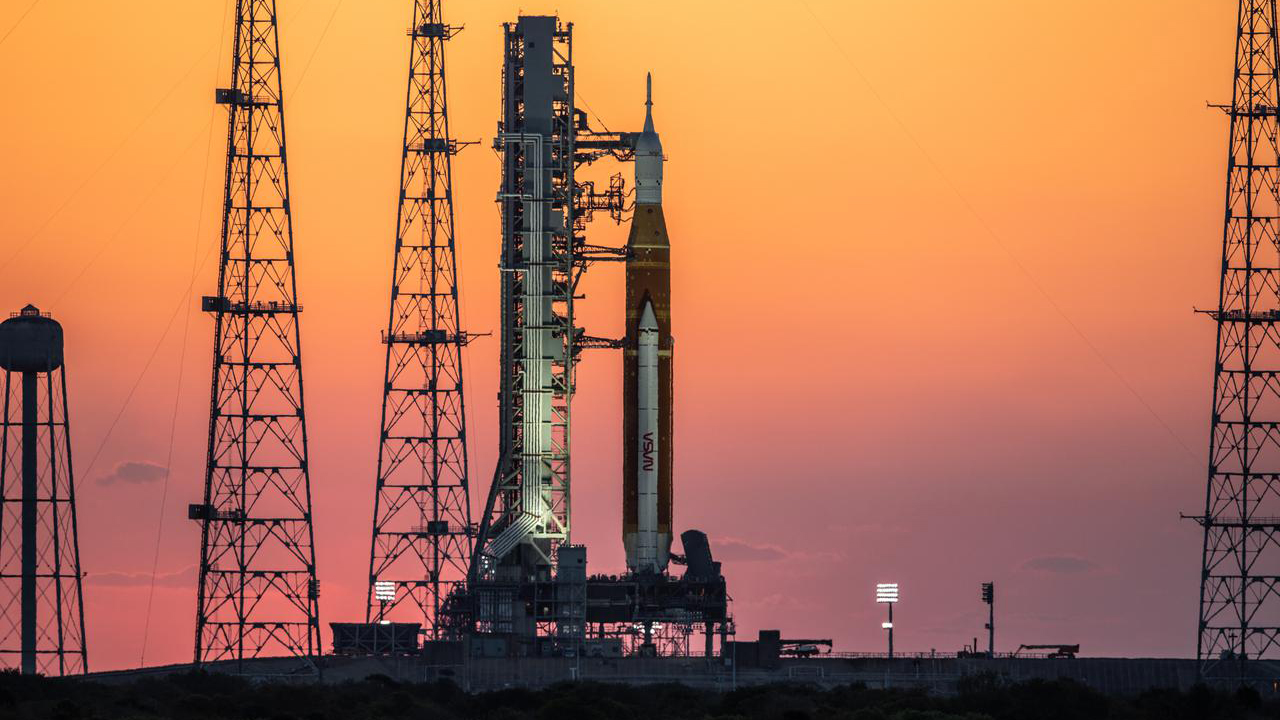NASA's Artemis 1 mission will blast off Monday (Aug. 29). Here's how to watch.
NASA hopes the rocket will one day take humans to Mars.

NASA's gigantic Artemis "mega moon rocket," the most powerful space rocket ever built, is gearing up to blast off to the moon. The Artemis 1 mission will launch Monday, Aug. 29, on an uncrewed test flight of the spacecraft powering NASA's Artemis moon program, which will eventually send humans back to our nearest natural satellite and then hopefully to Mars. Here's the plan for the launch and how you can watch it online.
The $20 billion Artemis rocket, which is composed of the 30-story Space Launch System (SLS) and the Orion capsule, is scheduled to take off from Launch Pad 39B at NASA's Kennedy Space Center in Florida sometime between 8:33 a.m. ET and 10:33 a.m. ET on Monday.
After it launches, the spacecraft's boosters, which are capable of 8.8 million pounds (3.9 million kilograms) of thrust, will fall away, and the Orion module will zip 40,000 miles (64,000 kilometers) beyond the moon before returning to Earth on Oct. 10.
Related: Lightning strikes Artemis I mission's 'Mega Moon rocket' launch pad during tests
"We will collaborate with commercial and international partners and establish the first long-term presence on the moon," NASA representatives wrote on the Artemis mission webpage. "Then, we will use what we learn on and around the moon to take the next giant leap: sending the first astronauts to Mars."
You can watch a livestream of the event through NASA television here on Live Science.
Coverage will also be available through the NASA mobile app and the agency's official website. For those who want to catch as much early coverage as they can, the launch countdown will start Saturday, Aug. 27, at 10:23 a.m. EDT.
Sign up for the Live Science daily newsletter now
Get the world’s most fascinating discoveries delivered straight to your inbox.
The Artemis 1 test flight will enable NASA scientists to make vital observations and tweaks before Artemis 2 makes the same journey with a human crew in 2024. Then, in 2025, the Artemis 3 mission will see the first woman and the first person of color to land on the moon.
These missions will be vital dress rehearsals for NASA's greatest ambition for the Artemis spacecraft: taking humans to Mars.
The SLS is the largest NASA rocket since the Apollo program's Saturn V rocket, and is made up of a liquid hydrogen and oxygen core booster with two smaller rocket boosters attached to its sides. For the Artemis 1 flight, the rocket will send the Orion capsule on a six-day, 69 mile-high (111 km) flyby of the moon's surface, during which NASA engineers will gather data on the module's trajectory and the effects of low gravity on the three mannequins on board.
Then, upon its dramatic return through Earth's atmosphere at 32 times the speed of sound, NASA will put the capsule's ablative heat shield to the test. The extreme air friction and its parachute should safely slow the spacecraft to just 20 mph (32.2 km/h), after which it will plop down off the coast of Baja California, Mexico, in the Pacific Ocean.
Originally published on Live Science.

Ben Turner is a U.K. based staff writer at Live Science. He covers physics and astronomy, among other topics like tech and climate change. He graduated from University College London with a degree in particle physics before training as a journalist. When he's not writing, Ben enjoys reading literature, playing the guitar and embarrassing himself with chess.









